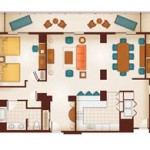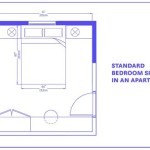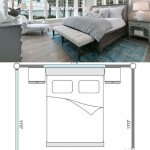The Cost of Adding a Bedroom and Bathroom: A Comprehensive Guide
Adding a bedroom and bathroom to a home can significantly increase its value and improve its functionality, accommodating growing families, hosting guests, or simply providing more personal space. However, these additions represent a substantial investment, and understanding the various factors that influence the total cost is crucial for homeowners considering such a project. This article will explore the key elements that contribute to the overall expense of adding a bedroom and bathroom, providing a comprehensive guide to help potential renovators budget effectively and make informed decisions.
The expense associated with adding a bedroom and a bathroom is not a fixed figure. It varies significantly based on several interdependent factors, including the project's scope, location, materials chosen, labor costs, and any unexpected complications that may arise during construction. A thorough understanding of these variables is essential for developing a realistic budget and avoiding potential financial surprises.
Key Cost Factors: Location and Size
Geographic location plays a pivotal role in determining the overall cost of adding a bedroom and bathroom. Labor rates, material costs, and permit fees can vary considerably from one region to another. Areas with higher costs of living typically have higher construction expenses. Metropolitan areas, for example, tend to be more expensive than rural areas. Therefore, obtaining local quotes and researching prevailing market rates in the homeowner's specific area is crucial for accurate budgeting. This market research should include comparing the pricing of different contractors, material suppliers, and subcontractors, such as plumbers and electricians.
The size of the proposed bedroom and bathroom directly impacts the amount of materials required, the labor hours needed, and the complexity of the project. A larger space will necessitate more framing materials, drywall, flooring, and fixtures. Similarly, a larger bathroom may require more extensive plumbing and electrical work. The complexity of the design also influences the cost. A simple rectangular room will be less expensive to build than a room with complex angles or custom features. Therefore, homeowners should carefully consider the size and layout of their desired additions, balancing their needs with their budget constraints. Optimizing the space and choosing efficient layouts can help minimize costs without compromising functionality.
Material Selection and Finishes
The choice of materials and finishes significantly affects the overall cost of adding a bedroom and bathroom. From the basic structural components to the final cosmetic touches, the prices of materials can vary considerably. Framing lumber, insulation, drywall, and roofing materials contribute to the foundational costs. Plumbing fixtures, electrical wiring, lighting, flooring, tiles, and cabinetry represent the finishing elements that can significantly impact the total expense. Selecting high-end materials, custom cabinetry, and designer fixtures will naturally increase the overall budget. Conversely, opting for more economical options can help keep costs down.
The finishes selected for the bathroom, such as tile, countertops, and fixtures, also contribute significantly to the cost. High-end tile, granite countertops, and designer faucets can substantially increase the budget. Choosing more affordable alternatives, such as ceramic tile, laminate countertops, and standard fixtures, can help reduce costs without sacrificing functionality. Homeowners should carefully weigh the trade-offs between aesthetics, durability, and cost when selecting materials and finishes. Exploring different material options and comparing prices from various suppliers can help optimize the budget and achieve the desired aesthetic without overspending.
The type of flooring chosen will also influence the overall cost. Carpet is generally less expensive than hardwood or tile, but hardwood flooring can add value to the home. When selecting materials, the homeowner may want to consider how additions will match existing materials and match the style of the house. If the house is comprised of high-end finishes and materials, choosing less expensive materials may make additions look out-of-place.
Labor Costs and Permits
Labor costs constitute a significant portion of the overall expense of adding a bedroom and bathroom. Hiring qualified and experienced contractors, plumbers, electricians, and other tradespeople is crucial for ensuring the project is completed safely, efficiently, and according to building codes. Labor rates vary depending on the region, the contractor's experience, and the complexity of the project. Obtaining multiple bids from different contractors is essential for comparing prices and finding the best value. It is important to verify the contractor's licenses, insurance, and references before making a hiring decision. Choosing the lowest bid is not always the best strategy; prioritizing quality and reliability is crucial for ensuring a successful project.
Building permits are required for most home addition projects and represent an additional cost that must be factored into the budget. Permit fees vary depending on the municipality and the scope of the project. The permitting process ensures that the addition meets local building codes and safety regulations. Failure to obtain the necessary permits can result in fines, delays, and even the requirement to dismantle the unpermitted construction. Therefore, homeowners should research the permit requirements in their area and budget accordingly. Some contractors include permit fees in their bids, while others require the homeowner to obtain the permits themselves. Clarifying this aspect with the contractor is essential for avoiding misunderstandings and unexpected expenses.
In addition to obtaining building permits, there may be other regulatory hurdles to overcome, such as zoning restrictions or neighborhood association rules. These regulations can impact the size, location, and design of the addition. Homeowners should investigate these potential restrictions early in the planning process to ensure that their project complies with all applicable regulations. Ignoring these regulations can lead to costly delays or even the inability to proceed with the project.
Plumbing and Electrical Work
Plumbing and electrical work are essential components of adding a bedroom and bathroom and represent a significant portion of the overall cost. Installing new plumbing lines for showers, sinks, and toilets requires specialized skills and expertise. Similarly, running new electrical wiring for lighting, outlets, and appliances requires adherence to strict safety codes. Hiring licensed plumbers and electricians is essential for ensuring that these systems are installed correctly and safely. The complexity of the plumbing and electrical work will depend on the location of the new bathroom and the existing infrastructure. If the new bathroom is located far from existing plumbing lines or the electrical panel, the cost will be higher.
The choice of plumbing fixtures and electrical fixtures also influences the cost. High-end faucets, showerheads, and lighting fixtures will increase the budget. Opting for more affordable alternatives can help keep costs down. However, it is important to choose fixtures that are durable and meet the homeowner's needs. Energy-efficient fixtures can also help save money on utility bills in the long run. Homeowners should work closely with their plumber and electrician to determine the most cost-effective and efficient solutions for their specific project.
The location of the new bathroom in relation to existing plumbing lines will affect the cost. If the new bathroom is located directly above or adjacent to an existing bathroom, for example, connecting to the existing plumbing lines will be easier and less expensive. If the new bathroom is located far from existing plumbing lines, the plumber may have to run new lines through walls, floors, or ceilings, which can add to the cost. Moving or altering existing plumbing lines can also increase the cost. If there are existing plumbing lines in the way of the new addition, they may need to be relocated, which can be a complex and expensive undertaking.
Unexpected Costs and Contingency Funds
Unexpected costs are a common occurrence in home renovation projects, and adding a bedroom and bathroom is no exception. Concealed problems such as hidden structural damage, asbestos, or outdated wiring can arise during construction, requiring additional work and expenses. These surprises can significantly impact the budget and cause delays. Therefore, it is crucial to allocate a contingency fund to cover these unforeseen costs. A general rule of thumb is to set aside 10-20% of the total project budget as a contingency fund. This fund provides a financial cushion to address unexpected issues without derailing the entire project. Failing to adequately plan for contingencies can lead to financial stress and compromise the quality of the project.
Changes in material prices or labor rates can also contribute to unexpected costs. Inflation and supply chain disruptions can cause material prices to fluctuate, while increased demand for labor can drive up labor rates. Homeowners should discuss these potential risks with their contractor and consider incorporating price escalation clauses into the contract. These clauses can help protect the homeowner from significant cost increases due to unforeseen market conditions.
When considering possible scenarios, it is important to think about extreme weather events. These events can cause project delays and increase the cost of materials. If the project will be done during winter months, there may be project delays if snow and ice make it difficult to work outside. If the project will be done during the summer months, heat waves can cause delays. Climate considerations will be important in scheduling and budgeting tasks.
Adding a bedroom and bathroom is a complex and multifaceted project that requires careful planning, budgeting, and execution. By understanding the various factors that influence the cost, homeowners can develop a realistic budget, make informed decisions, and ensure a successful renovation. From location and size to materials and labor, each element contributes to the overall expense. Allocating sufficient funds for unexpected costs and working with qualified professionals are essential for mitigating risks and achieving the desired outcome. The information throughout this article can serve as a guide for home owners who desire to begin making changes to their house.

How Much Does It Cost To Add A Bedroom And Bathroom 2024 Data Angi

5 Variables That Impact Your Master Bedroom Bathroom Addition

How Much Does A Bedroom Addition Cost 2024 Data Angi

How Much Does It Cost To Add A Bathroom Or Bedroom

Bedroom Addition Cost To Add A Fixr

2024 House Addition Cost To Add Room Fixr

The Price Of Adding A Bedroom Design Tips

How Much Does A Master Bedroom And Bathroom Addition Cost

How To Add A Room House Without Breaking The Bank 2024

2024 Room Addition Cost Average To Add A Angi
See Also








